Deciduous trees are trees that shed their leaves once a year, usually during the season of autumn, when their leaves are mature, or fully grown. Deciduous trees are divided into two categories. Those that can be found in either arctic or temperate climates. When photosynthesis slows down in the winter, they lose their red-colored leaves. It occurs as a result of the reduced availability of sunshine. On the other hand, the second category of green deciduous trees in tropical and subtropical regions of the world, drop their leaves primarily during the summer and dry season.
- Apple Trees
- Fig Trees
- Ginko Biloba
- Walnut
- Mimosa
- Almond
- Jacaranda
- Catalpa
- Papaya
- Fringetrees
- Maples
- Sycamore
- Bald Cypress
- Oak
- Mulberry
- Maples
- Beech trees
- Ash Trees
- Elm Tree
- Sweet Cherry
- Crabapple
- Weeping willow
- Pecan
- Hornbeam
- Aspen
- Yellow poplar
- Basswoods
Apple Tree
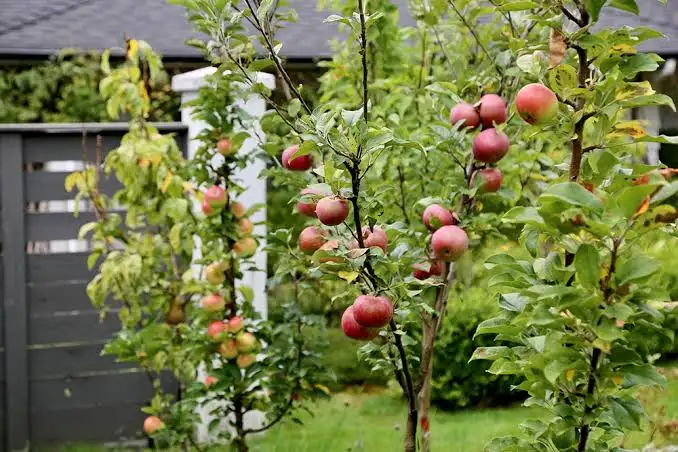
The apple is a hardy, deciduous woody perennial tree that grows in all temperate zones. Apples grow best where there is cold in winter, moderate summer temperatures, and medium to high humidity. Apples can grow from 10 to 30 feet tall and nearly as wide. They are moderately fast-growing, but growth slows with age. Apple trees can live for 100 years or more.
Fig Trees

Fig trees produce edible fruit that are delicious eaten right from the tree or used for preserves, dried fruit snacks, juice and in cooked dishes. They shoot up to 50 feet tall in the right location, with muscular branches, thick and twisting, extending out farther than the tree is tall. Their canopies, with bright-green, deciduous leaves and thick, twisting branches, typically spread 10 to 30 feet wide. Fig trees are not good trees to plant in a small garden or other limited area since they become enormous, shading out plants growing beneath. Fig fruits, encased in thinly skinned, fleshy, saclike peduncles, are various sizes.
Ginko Biloba
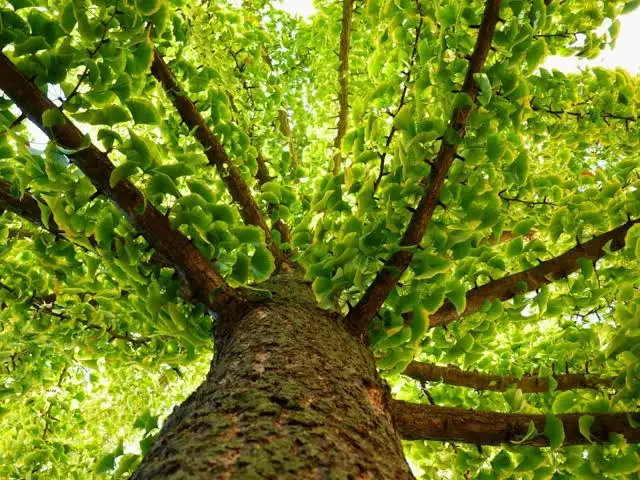
Commonly called maidenhair tree, Ginkgo biloba is a deciduous species of tree grown for its striking, fan-shaped foliage and tall, stately growth habit. Standard gingko trees eventually may reach 50 to 80 feet tall and from 30 feet to 80 feet across. Once established, maidenhair trees withstand pests, drought and pollution with little damage, so they require little hands-on maintenance.Ginkgos may grow 10 feet in ten years at first but their growth rate overall is considered slow to medium.
Walnut Trees
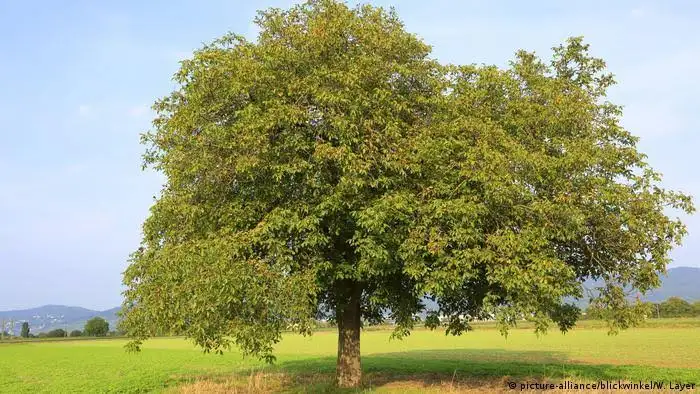
Walnut trees are any species of tree in the plant genus Juglans, the type genus of the family Juglandaceae, the seeds of which are referred to as walnuts. Most growing walnut trees attain heights of 50 feet (15 m.) with a spread of at least 5 feet. Walnut trees have long compound leaves with 5 to 23 short-stalked leaflets. The male and female reproductive organs are borne in different petal-less flower clusters, known as catkins, on the same tree. The twigs characteristically contain a many-chambered pith.
Mimosa Tree
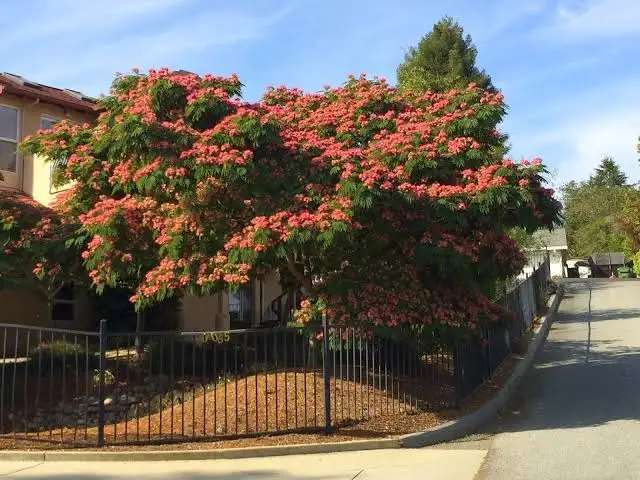
Mimosa is a stunningly beautiful tree when in full bloom, with its delicate pink flowers that rain down and carpet the ground in early summer. The leaves are soft and fernlike, and together with the flowers embody the other common name of the species — silk tree. Mimosa has a broad flat-topped crown and smooth beige bark that make for a very striking silhouette. The main downside of the tree as an ornamental species is the seedpods that hang on after the foliage drops, giving a messy, cluttered appearance throughout the winter.
Almond Tree
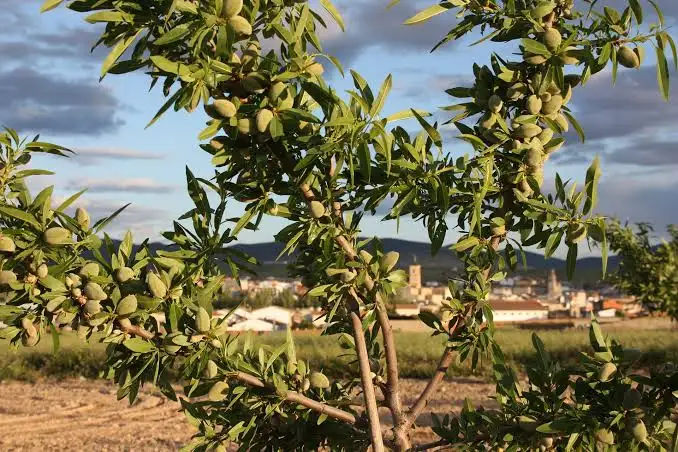
The almond tree, is a deciduous tree in the family Rosaceae which is grown for its edible seeds (nuts). The tree has brown or gray bark and either an erect or weeping growth habit depending on the variety. The trunk can reach 30 cm (12 in) in diameter. Almond leaves have serrated edge and grow alternately on the branches. The tree produces white to pale pink flowers and hairy green fruits which are oblong in shape. The fruit is a drupe, containing a single seed.
Jacaranda
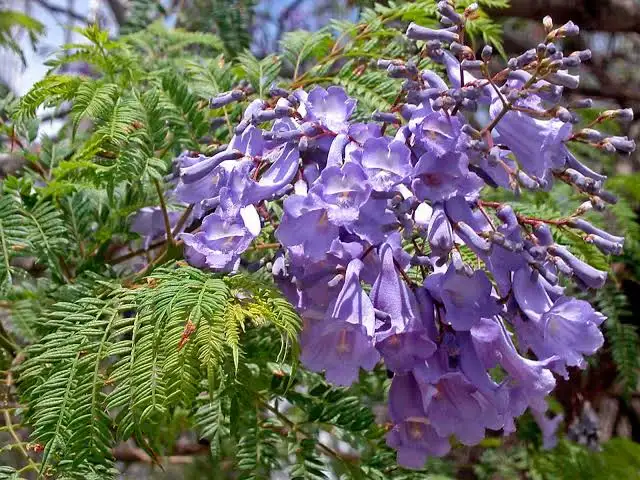
Jacarandas are highly drought-tolerant deciduous trees that drop their leaves in winter. They have a spreading form and flower with a heavy show of lavender and purple blooms. The leaves reappear in spring along with the voluminous purple blossoms, which appear in clusters and are 2-inch long tube-shaped forms. It is a fast-growing tree in a tropical environment, gaining about ten feet a year in its first years of life. Its growth rate varies depending on where it’s grown, slowing down to a moderate growth rate outside its ideal tropical environment.
Catalpa

Catalpa is a large deciduous tree that grows 50 to 80 feet tall. The tree has large, tropical, heart-shaped leaves that are deep green in color and 6 to12 inches long. The flowers are large and showy in May-June. They are white, orchid-like flowers that are in large bundles, called panicles. The seeds of Catalpa trees are borne in long bean pods that grow from 8 to 20 inches long. The seeds are deep green and turn brown in the fall. These bean pods are very prominent for this tree, as it is sometimes referred to as the Indian bean tree.
Pawpaw Tree

Pawpaw is a small, deciduous tree that may attain 15 to 30 feet in height. It can often be found in the forest understory, where it grows in clumps or thickets. This usually results from prolific root suckering, although seedlings may develop from fruits that drop to the ground but are uncommon and often are found some distance from a pawpaw thicket as the fruit is carried off and consumed by animals. In sunny locations, trees typically form a pyramidal shape with a single straight trunk bearing 6 to 12 inch, obovate-oblong, dark green, drooping leaves that turn yellow in the fall.
Fringetree

Fringetrees are outstanding, small, deciduous ornamental trees. Fringe tree grows as either a wide-spreading, multi-stemmed shrub or a small tree maturing at 12 to 20 feet in height and 12 to 20 feet in width. Trees in the wild may be taller. Fringetrees naturally grow with multiple stems, but can be trained to single trunks. The typical form is spreading with an open crown, but plant habit can vary.The fringe tree’s most outstanding feature is the fragrant, strap-like, white flowers that are borne in 6 to 8 inch long fleecy panicles in late May to early June.
Bald-cypress

Bald-cypress is a deciduous conifer and is only one of five conifer species that sheds its needles in the fall (hence, its “bald” namesake). Typically found growing in saturated soils, seasonally flooded areas, swamps and stream banks. Bald-cypress’s two-ranked needles (arranged in two rows on either side of a narrow stem) leaf out chartreuse in the spring and mature to light green in early summer. In the fall, the branchlets of stems and leaves change to tan and then turn orange to reddish-brown before they are shed.
Maples
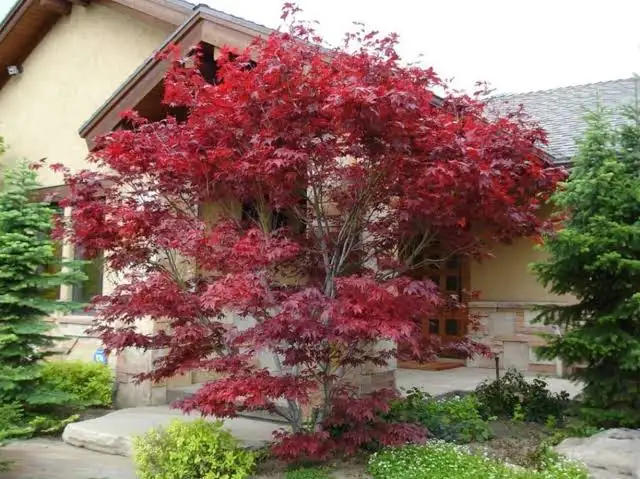
Maples are deciduous trees often grown for the shade they produce and their exceptional autumn color. They may be narrow and columnar, wide spreading and round-headed or low and mounded. Most maples are valued for their spectacular fall leaf colors, which range from muted yellow to bright orange and red. Many are noted for their large size and are used as shade trees, while others are valued for their delicacy and are used as accents. Some species have showy red flowers that appear in late winter before the leaves emerge in the spring. Others are characterized by interesting bark features.
Sycamore

The sycamore is a deciduous tree that is often grown for the shade it produces and the handsome bark on its massive trunk.The sycamore can grow to a height of about 35 m (115 ft) and the branches form a broad, rounded crown. The bark is grey, smooth when young and later flaking in irregular patches. The leaves grow on long leafstalks and are large and palmate, with five large radiating lobes. The flowers are greenish-yellow and hang in dangling flowerheads called panicles.
Deciduous Oak

An oak or an oak tree is a large tree that often grows in woods and forests and has strong, hard wood. Deciduous oak trees provide summer shade, and their leaves provide ornamental interest through colorful new growth and autumn color. Oak trees spread across the Northern Hemisphere, and species now can be found in areas ranging from the equator in Indonesia and Columbia to 60 degrees north latitude in Europe.
Mulberry
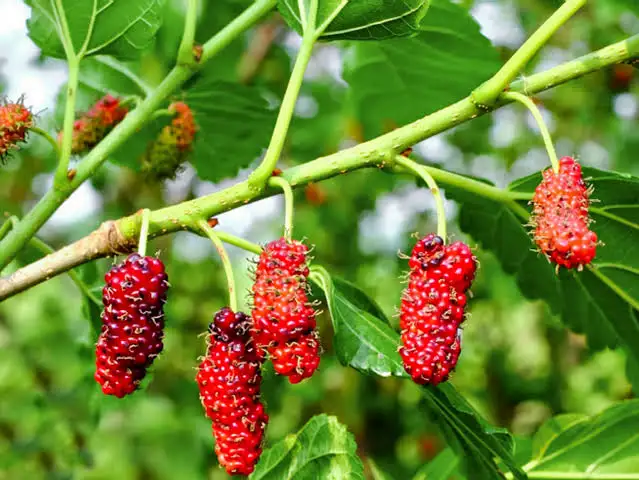
Mulberry is the name given to several species of deciduous shrub or tree in the genus Morus (family Moraceae) which are grown for their edible fruits. Mulberries are small to medium sized shrubs or trees with a thick tan-gray ridged trunk and light green leaves which vary in shape depending on variety. Leaves are arranged alternately and are lobed or unlobed, cordate (heart-shaped), dentate (toothed) and acuminate (tapering). The trees produce small green-yellow flowers in dense spikes and an oval aggregate fruit made up of individual drupelets. The fruit can be white, pink or purple to purple-black in color and contains numerous brown seeds.
Beech Tree

Beech is a genus of deciduous trees in the family Fagaceae, native to temperate Europe, Asia and North America. It’s easy to recognize a beech tree by its smooth, gray bark, which the tree keeps throughout its lifespan. In shady sites, beech trees have a massive, straight trunk that soars to a height of 80 feet (24 m.) or more. The crown stays small but dense in shade. The trees are shorter in full sun, but they develop a large, spreading crown. Beeches grow best in sandy loam. They are slow-growing but may live 400 years or more.
Ash Trees

Fraxinus, commonly called ash, is a genus of flowering plants in the olive and lilac family, Oleaceae. It contains 45–65 species of usually medium to large trees, mostly deciduous, though a number of subtropical species are evergreen. Most ash trees are small to medium in height, though some of the larger timber-providing species grow to 60–120 feet. The leaves of ash trees are opposite, usually deciduous, and pinnately compound with an odd number of leaflets, often five to nine. The narrow fruits, called samaras, are one-seeded and winged. The flowers usually are small and grow in showy clusters, and some species have petaled blooms.
Elm Trees

Elms are deciduous and semi-deciduous trees comprising the flowering plant genus Ulmus in the plant family Ulmaceae. Elm trees are huge shade trees that can grow up to 100 ft. (30 m) tall with a wide spread of around 75 ft. Some elm species have tall, upright growth, and other types of elm trees have an umbrella-shaped canopy. A common feature of most elm trees is their oval-shaped leaves with toothed edges, a pointed end, and visible veins.
Sweet Cherry
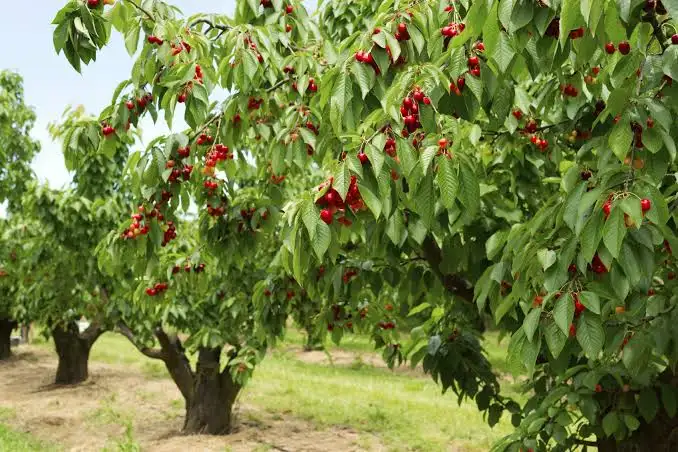
The sweet cherry is a fruiting deciduous tree that can grow to be up to 65 feet tall. It’s also often referred to as the wild cherry. The fruit the tree produces is edible, and the timber is highly sought after. It’s the cultivated forms of the tree, however, that commercially available cherries are harvested from. The wild tree fruit tends to be smaller and more bitter tasting. Sweet cherry cultivars, with their pretty white spring blooms, are also the ones found in nurseries to plant for ornamental purposes in a garden, container, or orchard.
Crabapple

Malus is a genus of about 30–55 species of small deciduous trees or shrubs in the family Rosaceae, including the domesticated orchard apple – also known as the eating apple, cooking apple, or culinary apple. They are widely grown for their attractive growth habit, spring flower display, and decorative fruits. The fruits are much smaller and more tart than the common apple (Malus domestica) but are suitable for jellies, preserves, and cider. The simple ovate leaves are serrated along the margins and are borne alternately along the twigs. The fragrant white, pink, carmine, or purplish flowers appear early in showy masses.
Weeping willow
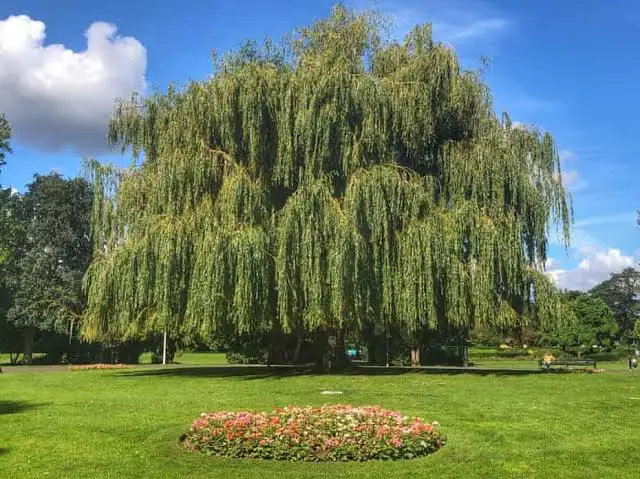
Weeping willow trees are deciduous trees famed for their dramatic, elegant appearance. Their long, graceful branches “weep” into an arch, creating a round canopy that grazes the ground gently. Their narrow leaves are light green on top, with silvery undersides until they turn yellow in autumn. The bark is rough, gray, and ridged. Yellow flowers bloom in late winter or spring. As a deciduous plant, weeping willow in winter loses its leaves, but it’s among the first trees to leaf out again the following spring.
Pecan Tree
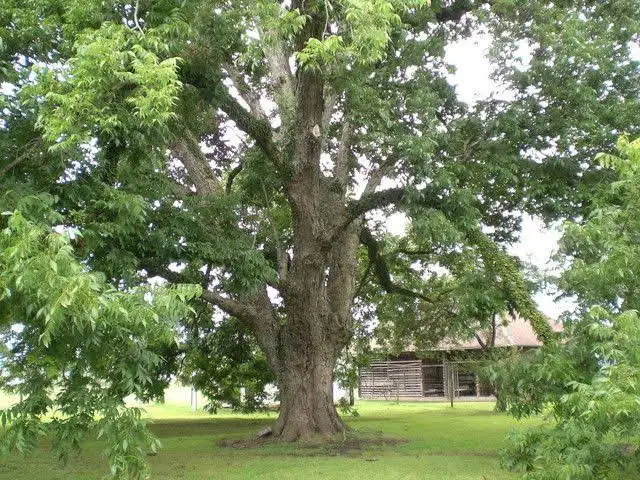
The pecan is a type of hickory and scientifically not a nut at all. It is what botanists call a drupe, a fruit with a single seed surrounded by a husk. The green husk eventually turns brown and drops away leaving the thin-shelled “nut” to be harvested. The pecan tree usually grows to between 70-100 feet but can reach 150 feet. It is a native of the southern US and northern Mexico and the nuts were for centuries an important autumnal food for native peoples.
Hornbeam
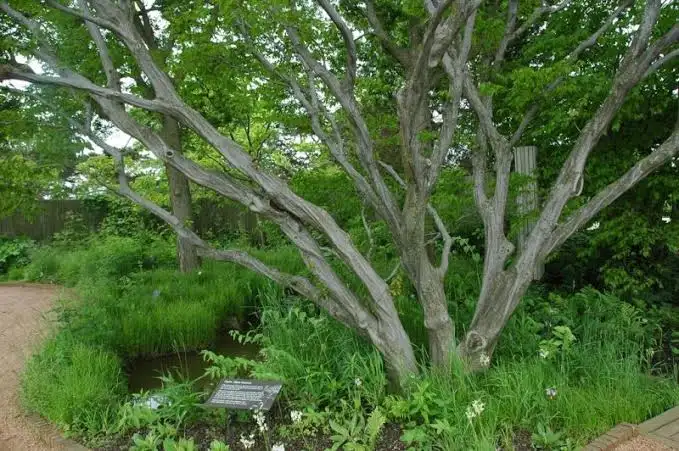
Common hornbeam is a deciduous, broadleaf tree which has pale grey bark with vertical markings, and sometimes a short, twisted trunk which develops ridges with age. The twigs are brown-grey and slightly hairy and the leaf buds are similar to beech, only shorter and slightly curved at the tips. Mature trees can reach a height of 30m and live for more than 300 years.
Aspen

Aspen are medium-sized deciduous trees, commonly 20 to 80 feet in height, and 3 to 18 inches diameter. Trees more than 80 feet tall and larger than 24 inches diameter are occasionally found. Their bark is smooth, greenish-white, yellowish-white, yellowish-gray, or gray to almost white in color. The green color is from chlorophyll in the bark. Their bark may become rough and fissured with age. Aspen leaves are are thin, firm, and nearly round, 1 1/2 to 3 inches diameter. They are pointed at the apex and rounded at the base, with many small rounded to sharply pointed teeth along their margins.
Yellow Poplar
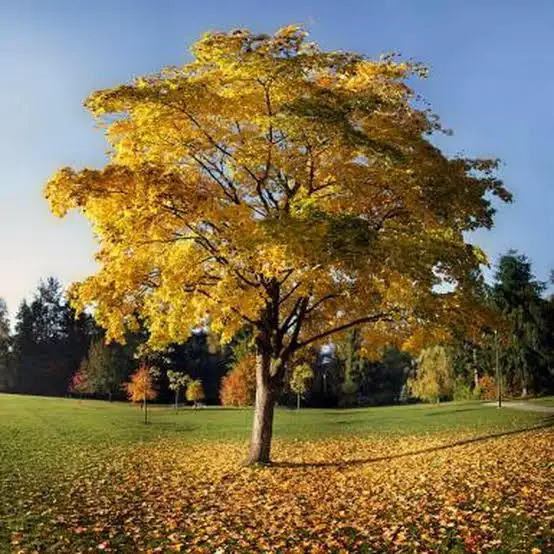
The yellow poplar tree is also called tuliptree, tulip-poplar, white-poplar, and whitewood. It is fast-growing and typically reaches heights between 80-100 feet. The trunks become massive in old age and deeply furrowed with thick bark. The tree maintains a straight trunk and generally does not form double or multiple leaders. Yellow poplar has a unique leaf with four lobes separated by rounded notches. The fall color is gold to yellow and is more pronounced in the northern part of its range.
Basswood
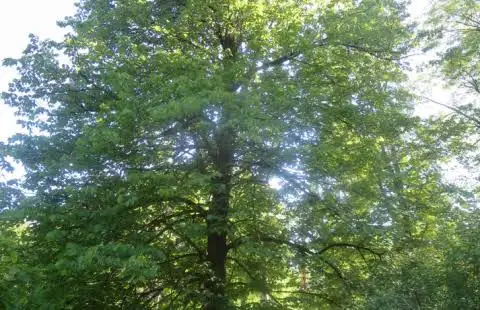
Basswood is a large, (70-80 feet in height), wide-spreading, round-topped tree with dense foliage. The leaves of basswood are alternately arranged, heart-shaped with unequal bases, coarsely toothed, and 3-6 inches in length. Twigs are light brown to gray in color with prominent, plump, bluntly pointed, dark red buds. The bark is light or silvery gray, and smooth or finely ridged on branches and young trunks. On older trunks, the bark breaks into long, medium ridges and furrows, dark gray to almost black in color.